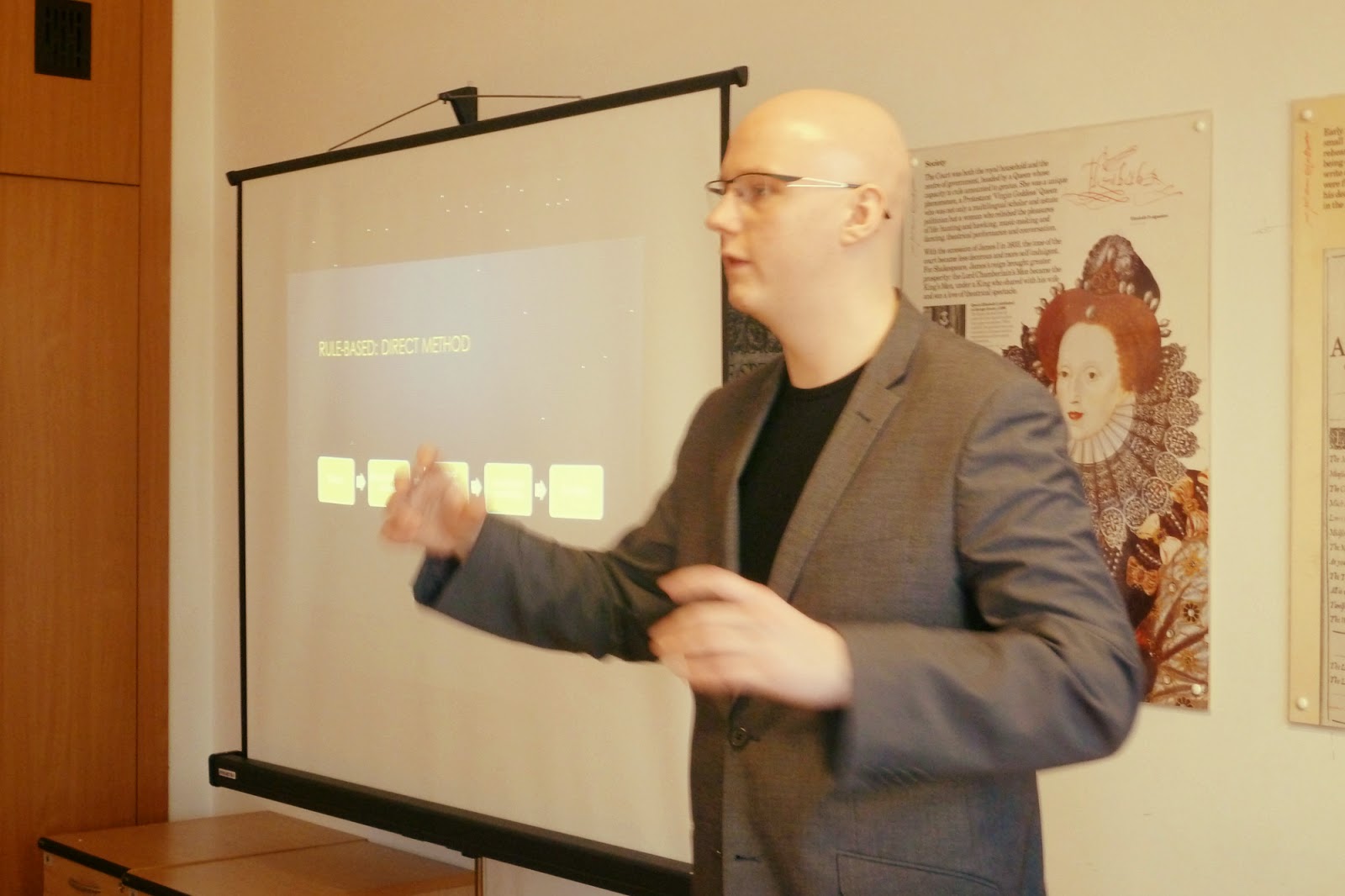Recent Developments in Translation Studies
The following four papers were presented by linguists from the John Paul II Catholic University of Lublin and Maria Curie-Skłodowska University.
Rafał Augustyn
Conceptual blending, neologisms and translation assessment
Maria Curie-Skłodowska University
Translation theories, which have proliferated over the past few decades (cf. Venuti 2012), generally suffer from theoretical eclecticism and, in consequence, appear to fail to provide satisfying answers to many questions fundamental to any theory of translation, one of them being the recurring problem of translation quality assessment.
As claimed by Tabakowska (1993), Cognitive Linguistics, being a relatively new linguistic paradigm, can nevertheless make a valuable contribution to Translation Studies by bringing into focus the semantic character of grammar. Within Cognitive Linguistics lexical items are held to be representations of cognitive categories based on human experiences of the world and are stored in human mind as mental concepts, while meaning is constructed through our interaction with the external world and is equated with conceptualization (Langacker 2008).
With this in mind, the paper examines a number of translated neologism pairs from science-fiction genre (English and Polish novels/TV series) to identify the construal shifts performed by the translators in the target texts as compared with the source text conceptualizations. In particular, it is argued that the assessment of the quality of neologism translations referred to above can be made more objective if recourse is made to (i) Fauconnier & Turner’s (2002) Conceptual Blending Theory, a fundamental cognitive mechanism playing a crucial role in structuring of conceptual knowledge and inferential processes and (ii) communicative relevance and discourse context as discussed in Brandt’s (2013) revised model of conceptual blending.
References:
Brandt, L. 2013. The Communicative Mind: A Linguistic Exploration of Conceptual Integration and Meaning Construction. Newcastle upon Tyne: Cambridge Scholars Publishing.
Fauconnier, G. & M. Turner. 2002. The Way We Think: Conceptual Blending and the Mind’s Hidden Complexities. New York: Basic Books.
Langacker, R. W. 2008. Cognitive Grammar. A Basic Introduction. Oxford: Oxford University Press.
Tabakowska, E. 1993. Cognitive Linguistics and Poetics of Translation. Tübingen: Gunter Narr Verlag.
Venuti, L (ed.). 2012. The Translation Studies Reader, 3rd ed. London, New York: Routledge.
Paweł Tutka
The interpreter’s status revisited: the concepts of neutrality and invisibility
John Paul II Catholic University of Lublin
The status of the interpreter has been an ongoing debate for many years. While there are groups of researchers who state that the interpreter should be a ‘helper’ and act as a ‘conduit’ only, other groups proclaim that the interpreter has to take on the role of essential partner, who has to be present at all times when a multicultural dialogue takes place. This is why it is so important to recognize the interpreter’s status as an active participant between the speaker and the listener.
The following study encompasses the following things: what are neutrality and invisibility and how were they perceived in the previous years, and how they are viewed at present. Moreover, the above-mentioned concepts will be seen from the angle of the interpreter’s roles in Poland. Special attention will be paid to community interpreting in Poland, especially in the context of legal, medical and immigration interpreting. Last but not least, suggestions as to what the interpreting curriculum should additionally encompass will be presented at the end of the study.
Radosław Fenc
Machine Translation – age old questions and the state of play
John Paul II Catholic University of Lublin
The main goal of this presentation is to show main issues and the ways of dealing with them in the field Machine Translation which is a part of computational linguistics. The problems with translating human-crafted texts lies in the very nature of human language – it is often ambiguous, metaphorical, and contextual in such ways that it is virtually impossible for a machine to accurately relay it into another code. However, the interdisciplinary science working in the background of translating machines has developed ways of coping with it, let it be Artificial Intelligence, linguistic analysis or purely mathematical/statistical approach, which has been a topic of academic dispute since the dawn of Natural Language Processing branch of linguistics in 1950’s. Short descriptions of mentioned approaches are provided and briefly discussed for their advantages, drawbacks, and possibilities.
Teoria w dydaktyce translacji: balast akademicki czy narzędzie przyszłego tłumacza?
Maria Curie-Skłodowska University
Zgodnie z aktualnymi tendencjami w edukacji, nadrzędną rolę odgrywać powinna wartość aplikatywna treści programowych. W dydaktyce translacji, realizowanej w Polsce głównie na uniwersytetach, poszukuje się równowagi między postulowanym podejściem rynkowym, a tradycją kształcenia akademickiego, często kojarzonego z przerostem składnika teoretycznego.
Czy obecność wiedzy teoretycznej z zakresu translatoryki ma rację bytu w nowoczesnym kształceniu tłumaczy? Co sądzą na ten temat studenci i jakie opinie przeważają w literaturze przedmiotu? Poszukiwanie odpowiedzi na powyższe pytania autorka zilustruje wynikami badania przeprowadzonego wśród przyszłych adeptów zawodu tłumacza.
Photos by Anna Prażmowska and Marietta Rusinek








No comments:
Post a Comment